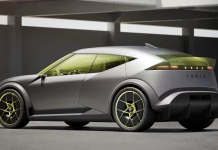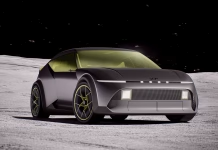Skoda Unveils Vision 7S Electric SUV Flagship With Seven Seats and Bold New Design...
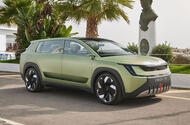 Production version of Vision 7S concept is confirmed for 2026; could push brand into new price bracket
Production version of Vision 7S concept is confirmed for 2026; could push brand into new price bracket
The production version of the Skoda Vision 7S seven-seater will arrive next year as the firm’s new electric flagship, with chiefs claiming it can play a key role in further strengthening the brand.
The new EV will sit above the Elroq, Enyaq and forthcoming Epiq in the Czech firm’s growing bespoke EV line-up and has been described by CEO Klaus Zellmer as Skoda’s new flagship.
The concept version of the Vision 7S was shown in 2022, introducing Skoda's new ‘Modern Solid’ design language, which has since been applied elsewhere.
The production version, which like the Eloq and Enyaq will use the Volkswagen Group’s MEB platform, is tipped to stick close to the concept’s styling.
Skoda sales boss Martin Jahn told Autocar that the new seven-seat EV would be “our new highlight”, adding: “There are not too many seven-seaters in the in the BEV arena, so we believe it will be a really important car: beautiful from the outside, very practical from the inside.
"It’s also an extension of the brand. We put a lot of effort into strengthening the brand, and this car will also help us to do that.”

Jahn refused to discuss an aspirational target price for the new model but acknowledged that it will sit above the Enyaq (which is priced from £39,010), potentially pushing Skoda into an entirely new price bracket.
But he said: “Skoda is always based on value for money. We are not the cheapest car in the segment, but when you buy our cars, you get better value for money than when you buy a car for the same money from another brand. Value for money is important for us, but [with this car it will be on] a different level than before.”
Billionaire Auto Heir Swaps Boardroom for Community Service After Tax Dispute Settlement

Tariffs Backfire as Companies Rethink American Manufacturing
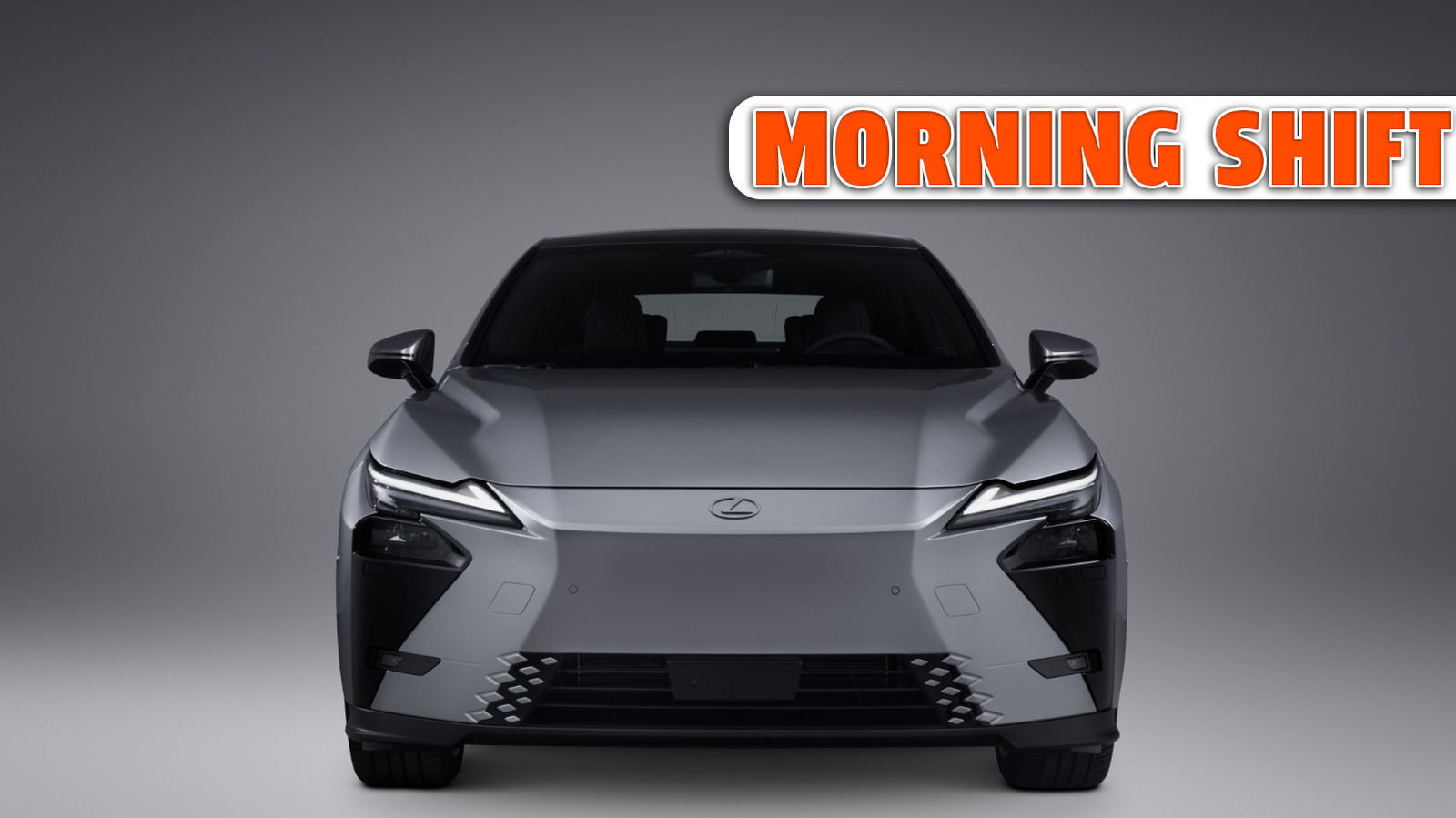
Peugeot Unveils Hybrid 208 and 2008 GTs in Brazil with Flex-Fuel Power and Bold...

Mercedes EQS Prototype Sets New Benchmark with 749 Mile Solid State Battery Drive Without...
 Prototype fitted with breakthrough battery tech drives from Stuttgart to Malmö without recharging
Prototype fitted with breakthrough battery tech drives from Stuttgart to Malmö without recharging
A Mercedes-Benz EQS fitted with a prototype solid-state battery has been driven 749 miles without stopping to recharge, marking a milestone in the development of the technology.
Mercedes engineers drove the modified saloon from the firm’s home town of Stuttgart, Germany, to Malmö, Sweden. It claims to have finished the trip with 85 miles of range left in reserve.
Although the route between the two cities would typically measure around 630 miles in length, the engineers plotted an alternate course accounting for the landscape and traffic conditions, while avoiding ferry crossings. That extended the drive by more than 100 miles.
The car’s solid-state battery uses cells from US firm Factorial Energy while the pack was designed in collaboration with Mercedes’ F1 base in Brixworth, Northamptonshire. Its weight and footprint are said to be “comparable” to a standard EQS’s lithium-ion pack – which yields up to 481 miles of range – but its energy capacity is said to be improved by 25%.
The battery pack uses a floating cell case with pneumatic actuators that help to manage the expansion and contraction of the cells in operation, to improve their stability and longevity.
Mercedes had previously expected the new pack to improve the car’s range to around 620 miles.
Chief technology officer Markus Schäfer hailed the technology as a “gamechanger”, saying the successful test drive shows how it can deliver “a new level of range and comfort”.
Schäfer added that Mercedes is aiming to bring solid-state batteries – which have long been considered a major breakthrough for electric cars, but which have faced decades of delays – to market this decade.
That matches the timeline quoted by the rival Volkswagen Group, which has unveiled its solid-state prototype at the Munich motor show. Rather than testing the technology in cars, however, it has opted to use a motorbike built by Audi-owned brand Ducati.
Hyundai Unveils Striking Concept Three EV to Challenge Electric Hatchbacks
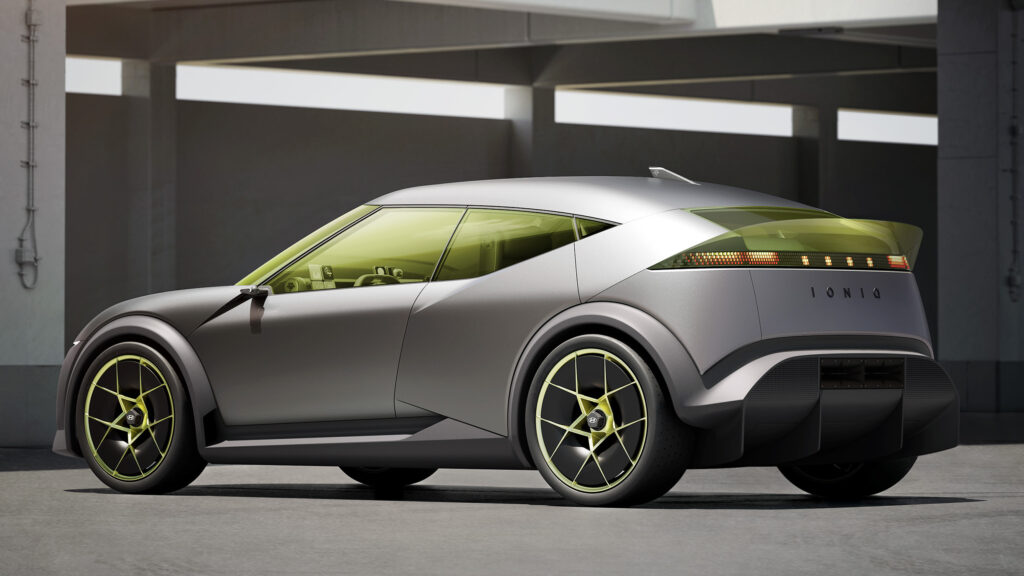
Renault Teases Return to Performance Roots with New Sports Car Proposals on the Horizon
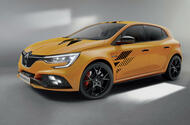 As the £140k Renault Turbo 3E nears production, Renault is "exploring some other" potential sports cars
As the £140k Renault Turbo 3E nears production, Renault is "exploring some other" potential sports cars
Renault is exploring the viability of new performance models – and it will show “first proposals” within the next year, its CEO has said.
Its last true dedicated sporting model was the fourth-generation Mégane RS hot hatch, which went out of production in 2023 with the 296bhp Ultime run-out special.
Renault has been experimenting again with sportier models recently, bringing to market the highly limited £140,000 5 Turbo 3E – a 533bhp hyper hatch that was created as a statement of intent for what a Renault performance EV is capable of.
Asked if the brand would consider launching anything more volume-focused and affordable in the sporting segment, boss Fabrice Cambolive told Autocar at the Munich motor show: “Yes, we are exploring some others. We will come to you with some proposals in the next 12 months."
On the viability of such a car or series of cars, Cambolive said that “we have to find the right balance” between cost and demand before approval will be given.
To that end, Renault Clio product line manager Emmanuel de Jesus Pequeno recently told Autocar that a hot version of the new sixth-generation supermini is not currently on the cards. This is because of the "compromise" between the level of investment required to transform it into a hot hatch and the level of demand anticipated.
Renault would most likely be required to redevelop the previous Mk4 Clio RS's 1.6-litre turbocharged four-cylinder engine or the Alpine A110's punchier 1.8 to meet future emissions regulations, which could prove prohibitvely costly.
Although the new "proposals" could resurrect the Renaultsport moniker, Cambolive hinted that the Renault Group could decide to continue using the Alpine brand exclusively for dedicated sports cars.
In February, then CEO Luca de Meo described Renaultsport to Autocar as being “in the fridge” and said that while “everything sporty would be building on Alpine”, that “doesn't mean that sometimes this thing wouldn’t be revived”.
Furthering his point, de Meo said: “I’ve been asked why the new 3E Turbo is not an Alpine, and I said ‘sorry, because the 5 Turbo was never an Alpine, it was a Renault, and if you want to do something authentic, you gotta respect the history of the thing'.”
2026 Lexus IS Debuts Bold Facelift With Sleek Design and High-Tech Upgrades
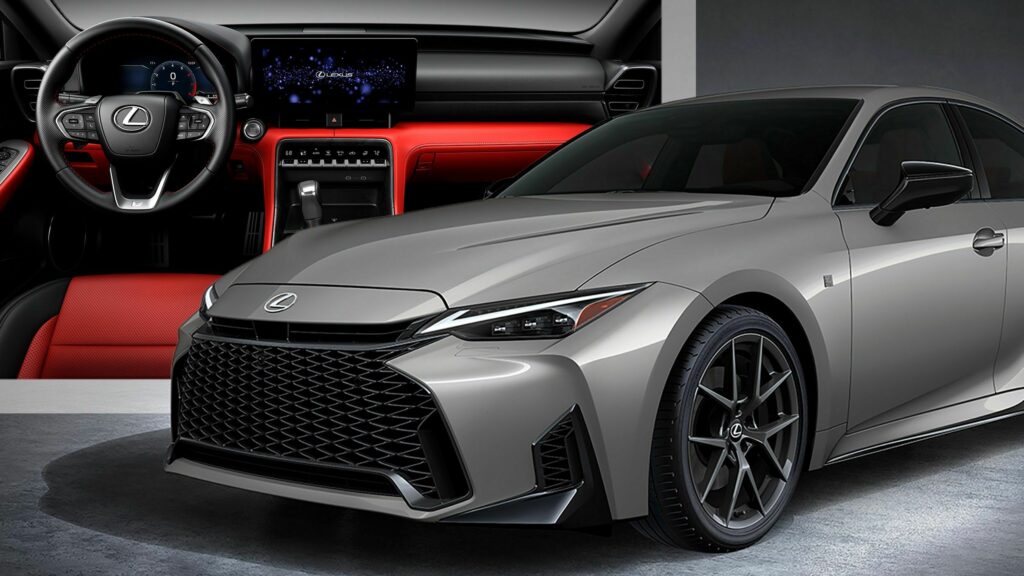
Hyundai Unveils Concept Three Compact Hatchback With Game-Changing Interior

Hyundai Concept Three Unveils Bold Electric Hatchback Set to Redefine Family Cars in 2026
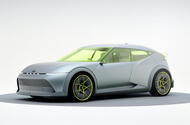 Eye-catching EV concept to make production as family hatch; likely called Ioniq 3
Eye-catching EV concept to make production as family hatch; likely called Ioniq 3
The Hyundai Concept Three previews a new compact electric hatchback that will go into production next year.
A star of the Munich motor show, the Concept Three will spawn a model expected to be called Ioniq 3 in production, although the Ioniq 2 and Ioniq 4 names also remain possible, execs told Autocar.
The five-door hatchback will be manufactured in Europe and is likely to become the brand’s best-selling electric car here.
Hyundai Design Centre boss Simon Loasby said while the show car is conceptual in many of the details, its overall proportions, shape and surfacing are true to the production car – which had, in fact, been designed ahead of the Concept Three.
The concept is a similar length to the Volkswagen Golf, at 4288mm. Far from being a conventional hatchback, however, it is what Hyundai calls an ‘aero hatch’, with a more rakish body and a sculpted rear hatch and spoiler that optimises airflow for low drag and efficiency.
This is in keeping with the rest of the Hyundai Ioniq range, comprised of cars that eschew conventional shapes and sizes.
Loasby said such a strategy allowed Hyundai to design models with specific target customers in that segment in mind. He added that such an approach was vital in the mainstream hatchback segment in particular as a way to “stand out in an extremely competitive [segment] with a lot of good cars”.
The concept brings with it a new design language Hyundai calls ‘Art of Steel’, which is designed to showcase and celebrate steel as a material and create more sculpted shapes and surfaces with it.
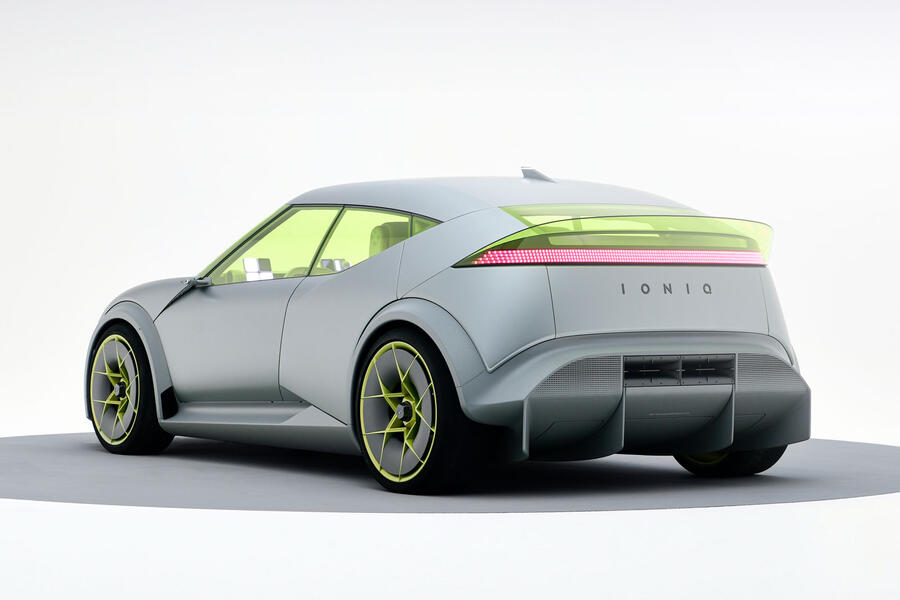
This approach isreinforced simply by making cars more fun and friendly in order to resonate with buyers. The concept has a series of hidden Easter eggs with that in mind, including a repeating icon called ‘Mr Pix’.
Loasby said the production car wouldn’t quite be as wide or as low as the 1968mm-wide and 1465mm-tall Concept Three, but its “fundamentals” would all remain.
The headlights will remain slim (although not hidden as much as those on the concept) and the pixel graphics will remain as one of a limited number of visual links with the other Ioniq models.
The concept’s gullwing doors will also give way for production, with Loasby saying they were there to better showcase the interior.
The interior is even more radical than the exterior, but it still has links to the production car. Material use and design have been applied with a ‘Furnished Space’ mantra in an effort to sculpt and trim surfaces as if in a living room.
Both the Art of Steel and Furnished Space themes were part of Hyundai trying to treat materials “in a more natural way”, said Loasby.
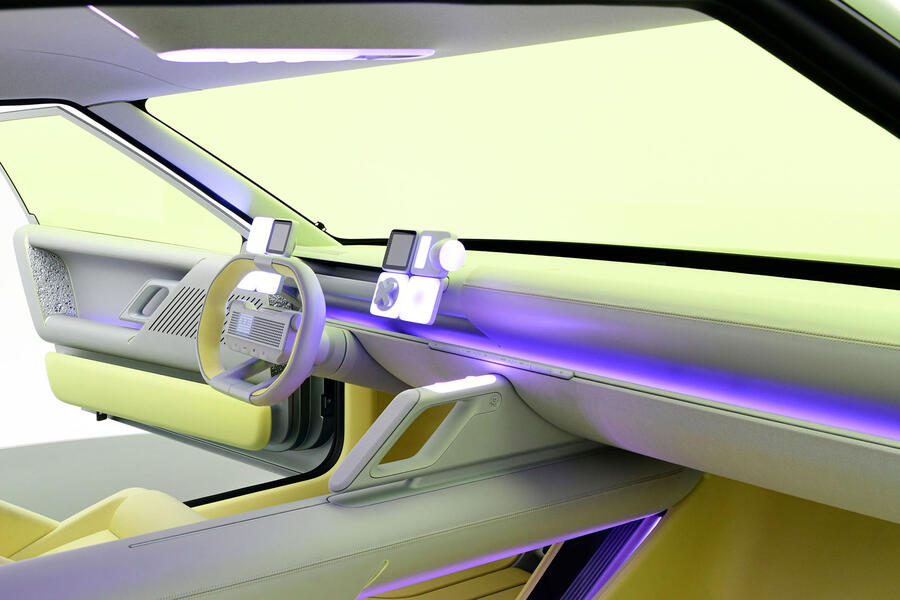
There is also a new approach to the HMI multimedia interface, with an increased number of buttons near the driver to help keep their eyes on the road more of the time.
In a continuation of this theme, the driver display is also moved above the steering wheel and therefore closer to the driver’s eyeline.
“We have to keep safety at the top of the pyramid,” said Loasby. “We never went all in on touchscreens and kept buttons.”
Hyundai has yet to confirm any technical specifications for the concept other than saying it is electric, but it is understood to be based on the same 400V E-GMP EV architecture as the Kia EV3. For production it will be offered with similar drivetrains and batteries to those of its sibling model, which is also manufactured in Europe.






